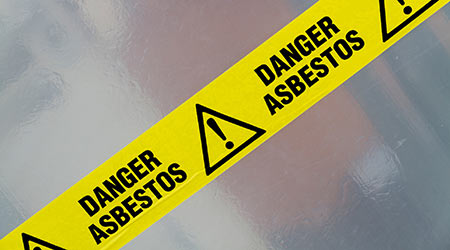
Federal investigators found a local medical clinic failed to tell maintenance workers they were being exposed to hazardous asbestos material - which the company identified in 2008 - and did not provide workers with protective equipment.
An investigation by the U.S. Department of Labor's Occupational Safety and Health Administration (OSHA) found The Monroe Clinic Inc., in Monroe, Wisconsin, violated federal workplace health standards related to dangerous asbestos. On Dec. 21, 2016, the agency cited the clinic with one willful and 11 serious safety and health violations after its June inspection of the facility. The employer faces $261,890 in proposed penalties.
"Monroe Clinic knew its employees were working amid materials known to contain asbestos, and failed to inform them of the location of hazards and to protect them from exposure to a known carcinogen that can cause life-long health issues and possibly death," said Ann Grevenkamp, OSHA's area director in Madison. "It is imperative that employers take all known precautions to protect workers from potential exposure to any material that may contain asbestos."
Investigators found maintenance employees had disturbed asbestos while conducting maintenance tasks, repairs and installation and removal of materials as they worked on the boiler and in crawl spaces, near ceiling tiles and in other areas where asbestos containing materials had been identified.
Asbestos exposure occurs when workers cut, damage or otherwise disturb asbestos-containing building materials including contact with materials that are deteriorating, releasing asbestos fibers that can be inhaled without proper protection. Asbestos can cause lung disease and mesothelioma, a cancer of the lining of the lung or stomach that is nearly always fatal. Asbestos fibers also remain on clothing and transfer to other surfaces such as upholstery and carpets, creating a danger of secondary exposure for others.
In its citations, OSHA alleges that Monroe Clinic failed to:
• Provide basic personal protective equipment such as protective clothing.
• Create a decontamination area for employees to remove protective clothing before leaving the worksite.
• Use appropriate work methods to minimize asbestos exposure, such as using wet methods to keep asbestos fibers from becoming airborne and using local exhaust ventilation.
• Provide respiratory protection.
• Conduct exposure assessments.
• Provide medical surveillance to monitor potential exposure.
• Post signage on the boiler room and in other locations warning of known asbestos containing material.
• Inform workers on the location and use of hazardous chemicals in the facility.
To read this full report, click here.

 The Down and Dirty on Cleaning in Virus Season
The Down and Dirty on Cleaning in Virus Season How Surfactant Use is Expanding in Commercial Cleaning
How Surfactant Use is Expanding in Commercial Cleaning Clean Buildings Conference
Clean Buildings Conference